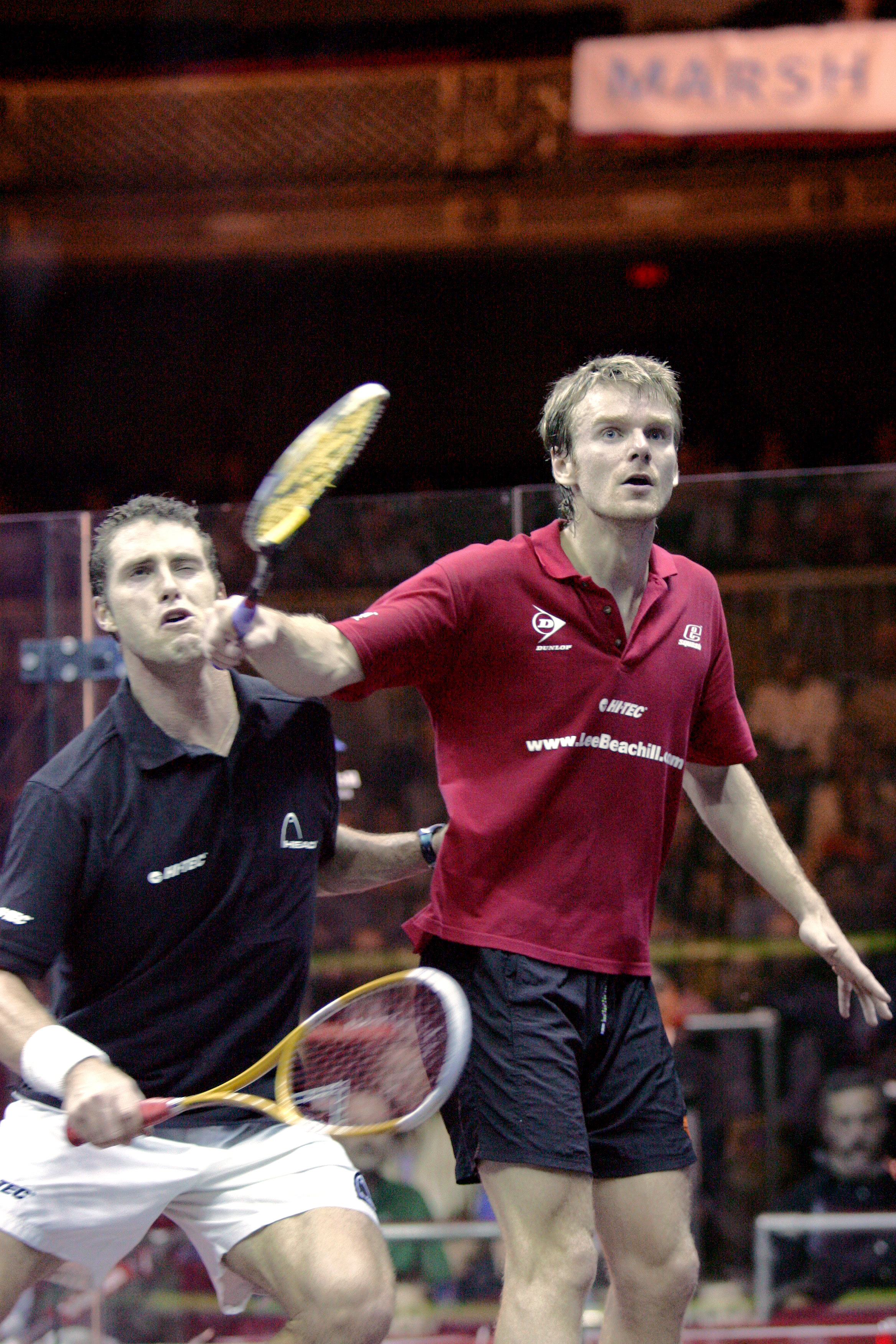By Barry Faguy, WSF Referees and Rules Committee
Preamble
In the past, we featured a basic article about interference to the swing. Here, we get a bit more specific and deal only with the follow-through—the third and last part of the swing after the backswing and downswing. It can be troublesome in terms of decision-making—and we often see delays by befuddled Referees before hearing their decision.
The scope
There are numerous situations where follow-through situations occur, but for the sake of brevity, we’ll deal exclusively with those situations that occur after the ball has been hit, and where the non-striker is then hit by the racquet on the follow-through, by an unchecked swing. This means that, wherever the ball was headed, it was not affected by the contact. Also, to keep things simple, all swings are reasonable, as are the opponent’s movements (therefore, not crowding)—which given the speed of the modern game, is entirely reasonable.

Some considerations
Before we get to the decisions, there are a few points to keep in mind:
Firstly, the distinction as to who exactly is the striker at a given moment is a very important consideration for interference decisions. However, given the speed of these events, there is a very rapid changeover from striker to non-striker (determined by the moment the ball hits the front wall)—and figuring who is who isn’t always easy when we’re talking fractions of a second.
Secondly, distraction can be an important consideration to arrive at a fair decision—but the rules leave its definition to each Referee. When a player hits the opponent, a reflective and valid fear of having injured the opponent naturally kicks in—and that player will invariably stop play. Getting a racket in the face is the other side of the coin.
Next, the timing (whether there is a delay or not) of the appeal can be of help— especially if the Referee is convinced that the player waited to see the outcome of the shot. However, very often, the Referee isn’t even sure why play has stopped since rarely is there an immediate verbal appeal.
Finally, the sense of fairness plays an important role—but as in dealing with beauty, its determination lies in the eye of the beholder.
The decisions
The STRIKER appeals after hitting the ball down or out: The only fair decision here is a ‘No Let’, because the contact clearly had no effect on the outcome of the return. As the expression goes, “You can’t have your cake and eat it too”.
The OPPONENT appeals after the ball was hit down or out: Here, fairness demands that the appeal be disregarded and the result of the shot stands, and the opponent wins the rally. Nothing has affected the return.
The STRIKER appeals after hitting a good shot: Here, the decision should be a let, since by ‘good shot’ we imply that the return is retrievable by the opponent. But to deny a let to the striker on the grounds of possibly not being the striker would surely smack of unfairness. Distraction (for which either player may appeal) is justified here— there being a valid concern about actually having injured the opponent.
The OPPONENT appeals after a good shot was hit: Here again, by ‘good shot’ we imply that the return is retrievable. Distraction, in the frequent form of getting a racket in the face, can this time be applicable to the opponent.
The STRIKER appeals after hitting a winner: Here we have the opposite of the first case above—and a ‘Stroke’ is the only reasonable decision since a winner was hit. In fact, the Referee disregards the appeal by that player. Such situations are proof of the genuine concerns that players have for their opponent.
The OPPONENT appeals after a winner was hit: The fair decision here is a ‘No Let’ because the fact remains that the ball was not retrievable.
Of course, as we’ve alluded to in the preliminary considerations, if the Referee was uncertain about anything (easy for follow-through situations), then “Let” based on the uncertainty principle (see the December 2010 edition) would be entirely justified.
As is often the case, it may be that the next decision you have to make will indeed be about a contact on the follow-through. But just to make your life exciting, maybe both players will turn to you and ask for a let…simultaneously!


